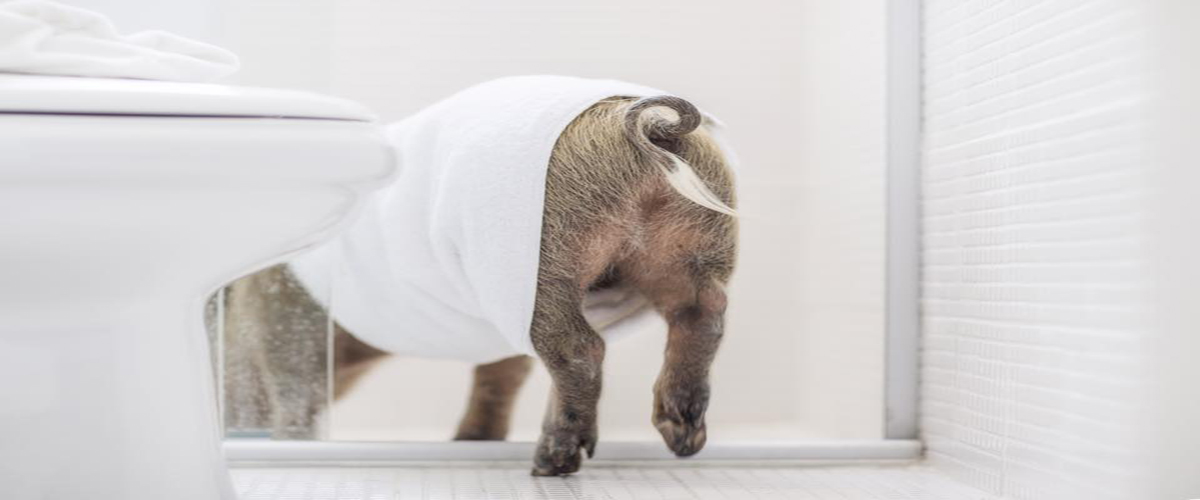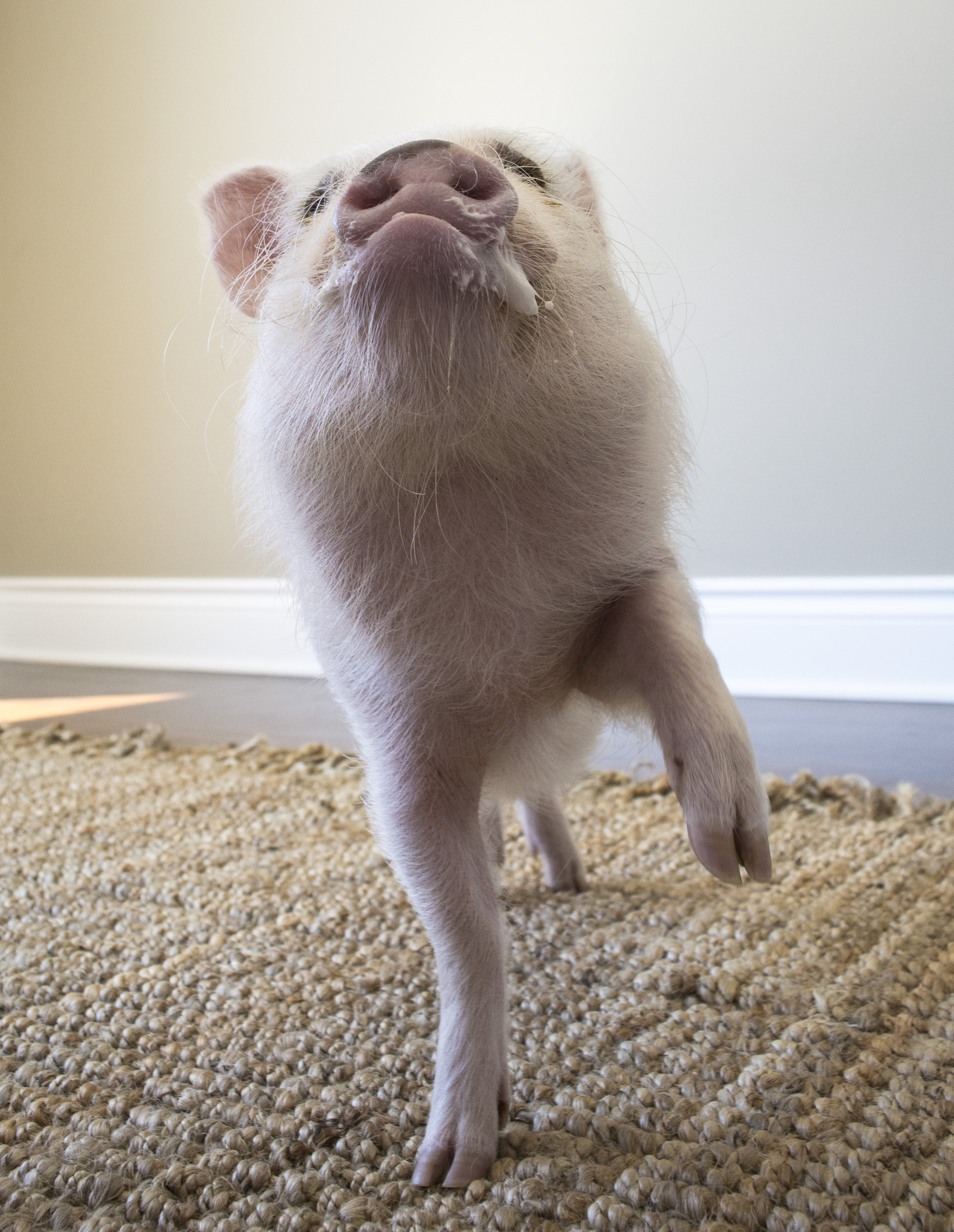Mini pigs are becoming increasingly popular as pets due to their intelligence, affectionate nature, and trainability. However, training a mini pig requires patience, consistency, and an understanding of their unique needs. In this comprehensive guide, we will walk you through everything you need to know about how to train a mini pig effectively, ensuring a well-behaved and happy companion.
Why Train Your Mini Pig?
Training your mini pig is essential for several reasons:
- Establishing good behavior: Proper training helps prevent destructive behaviors that may arise from boredom or lack of boundaries.
- Safety and control: Training ensures your pig responds to basic commands like “come,” “stay,” and “leave it,” which is crucial for their safety and yours.
- Mental stimulation: Pigs are highly intelligent animals that require mental challenges to stay engaged and prevent boredom.
- Bonding: Training strengthens the bond between you and your pig, leading to a more fulfilling and harmonious relationship.
By understanding these key reasons, you can approach training with the right mindset and dedication.

Training Basics
1. Start Early
It’s best to start training your mini pig as soon as possible, ideally when they are still young. Early training allows you to establish good habits from the beginning and solidify your role as the leader. Pigs are quick learners, so starting early will make the process smoother.
2. Consistent Routine
Pigs thrive on routine. Establish a consistent daily training schedule at a time when your pig is most focused and calm. Avoid training before mealtimes, as hunger can lead to impatience and frustration. A consistent routine helps your pig know what to expect and reduces stress during training sessions.
3. Positive Reinforcement
Pigs are highly motivated by food and affection. Use small, pig-friendly treats like chopped apples, grapes, Cheerios, shredded wheat, or plain popcorn. Positive reinforcement is key to successful training. Reward your pig immediately after they perform the desired behavior to reinforce the connection between the action and the reward.
4. Combine Treats with Praise
In addition to treats, verbal praise and physical affection (such as petting and scratching) are important. Pigs are social animals and enjoy bonding with their owners. Combining treats with praise helps reinforce good behavior and strengthens your relationship.
5. Clicker Training
Consider incorporating a clicker into your training routine. A clicker is a small device that makes a distinct sound when pressed. The sound serves as a marker for good behavior and can be paired with treats and affection. Over time, your pig will associate the clicker sound with positive outcomes, making it easier to reinforce desired behaviors.

Housebreaking Your Mini Pig
Housebreaking a mini pig can be a challenging but rewarding process. With patience and consistency, your pig can learn to use a designated potty area, whether indoors or outdoors.
1. Choosing a Method
Before you start housebreaking, decide whether you want to train your pig to use a litter box or go outside. Litter box training is often easier for piglets, while outdoor training may be preferable for older pigs. Both methods require consistency and positive reinforcement.
2. Litter Box Training
If you choose to litter box train your mini pig, follow these steps:
- Suitable Litter Box: Provide a large, shallow litter box lined with paper towels for traction and filled with pine shavings, pine pellets, or newspaper pellets.
- Confined Area: Keep your pig in a confined area with the litter box until they are reliably using it. This helps them understand where they should go.
- Frequent Placement: Place your pig in the litter box every few hours, especially after meals, naps, and playtime.
- Potty Command: Use a consistent command like “go potty” to signal when it’s time to use the litter box.
- Positive Reinforcement: Praise your pig when they use the litter box correctly. This reinforces the behavior and encourages them to continue using it.

3. Outdoor Training
If you prefer outdoor potty training, follow these steps:
- Doorbell Training: Hang bells on the doorknob of the exit door and train your pig to ring them when they need to go outside. This gives your pig a way to signal when they need to go.
- Regular Outings: Take your pig outside frequently, especially after waking, eating, drinking, and playing. Consistency is key to success.
- Designated Potty Area: Choose a consistent potty spot in your yard and take your pig there each time. This helps them associate the spot with potty time.
- Rewards: Offer praise and treats when your pig eliminates outside. Positive reinforcement encourages them to continue using the designated area.

4. Handling Accidents
Accidents are inevitable, especially in the early stages of housebreaking. It’s important not to punish your pig for accidents, as this can lead to confusion and fear. Instead, clean the area thoroughly with an enzyme cleaner to eliminate odors and prevent your pig from returning to the same spot.

Teaching Basic Commands
Once your mini pig is housebroken, you can move on to teaching basic commands. Pigs are intelligent and can learn a variety of commands with patience and practice.
1. “Come”
Teaching your pig to come when called is essential for their safety. Start by using the command during mealtimes, calling your pig’s name and saying “come” as you offer food. Gradually increase the distance between you and your pig to reinforce the command.
2. “No”
Pigs are curious creatures, and they may get into things they shouldn’t. Use a firm “no” and a hand gesture, such as a raised hand or pointed finger, to signal that a behavior is unacceptable. Consistency is key to reinforcing this command.
3. “Leave It” or “Back”
When your pig approaches something off-limits, use the command “leave it” or “back” and gently guide them away. This command is useful for keeping your pig out of dangerous or inappropriate areas.
4. “Stay” or “Wait”
Teaching your pig to stay in one place can be challenging, but it’s an important command for safety. Use a hand gesture, such as an open palm, and gradually increase the duration your pig stays still. Reward them with treats and praise for staying in place.

Training Your Pig to Do Tricks
Mini pigs are capable of learning a variety of fun tricks. Here are some popular tricks and how to teach them:
1. “Spin”
To teach your pig to spin, hold a treat in front of their snout and slowly move it in a circular motion. Your pig will follow the treat with their nose, eventually spinning in a circle. Reward them with the treat and praise once they complete the spin.
2. “Sit”
Hold a treat above your pig’s head and slowly move it backward. As your pig follows the treat with their eyes, they will naturally sit down. Once they sit, reward them with the treat and praise.
3. “Shake”
To teach your pig to shake, gently tap and lift one of their front hooves while saying “shake.” Reward them with a treat and praise once they lift their hoof. With practice, your pig will learn to offer their hoof on command.

Troubleshooting Common Training Issues
Training a mini pig can come with its challenges. Here are some common issues and how to address them:
1. Potty Training Issues
If your pig is struggling with potty training, consider adjusting their routine or the location of their litter box or potty area. Ensure that you are using positive reinforcement consistently and avoid punishment for accidents.
2. Food Aggression
Some pigs may display food aggression, especially if they feel threatened or anxious. If this occurs, stop hand-feeding treats and consult resources on addressing food aggression. Gradually reintroduce treats in a controlled and calm environment.
3. Destructive Behavior
Pigs are intelligent animals that require mental stimulation. If your pig is engaging in destructive behavior, such as chewing or rooting in inappropriate areas, increase their mental stimulation with toys, puzzles, and training exercises.

Conclusion
Training a mini pig is an ongoing process that requires patience, consistency, and positive reinforcement. By following the guidelines outlined in this article and understanding your pig’s unique needs, you can successfully train your mini pig and enjoy a happy and rewarding relationship with your intelligent and affectionate companion.
Frequently Asked Questions (FAQ)
1. How long does it take to train a mini pig?
Training a mini pig can take several weeks to months, depending on the pig’s age, personality, and the consistency of the training routine. Patience and persistence are key.
2. Can mini pigs be trained to use a litter box?
Yes, mini pigs can be trained to use a litter box. Litter box training requires consistency, a suitable litter box, and positive reinforcement.
3. What treats are best for training mini pigs?
Small, pig-friendly treats like chopped apples, grapes, Cheerios, shredded wheat, or plain popcorn are ideal for training mini pigs. Avoid treats high in sugar or salt.
4. How do I stop my mini pig from being destructive?
To prevent destructive behavior, ensure your pig has plenty of mental stimulation through toys, puzzles, and training exercises. Increasing their activity level can also help reduce boredom.
5. Can mini pigs learn tricks?
Yes, mini pigs are highly intelligent and can learn a variety of tricks, such as “spin,” “sit,” and “shake.” Training tricks can be a fun way to bond with your pig and provide mental stimulation.







